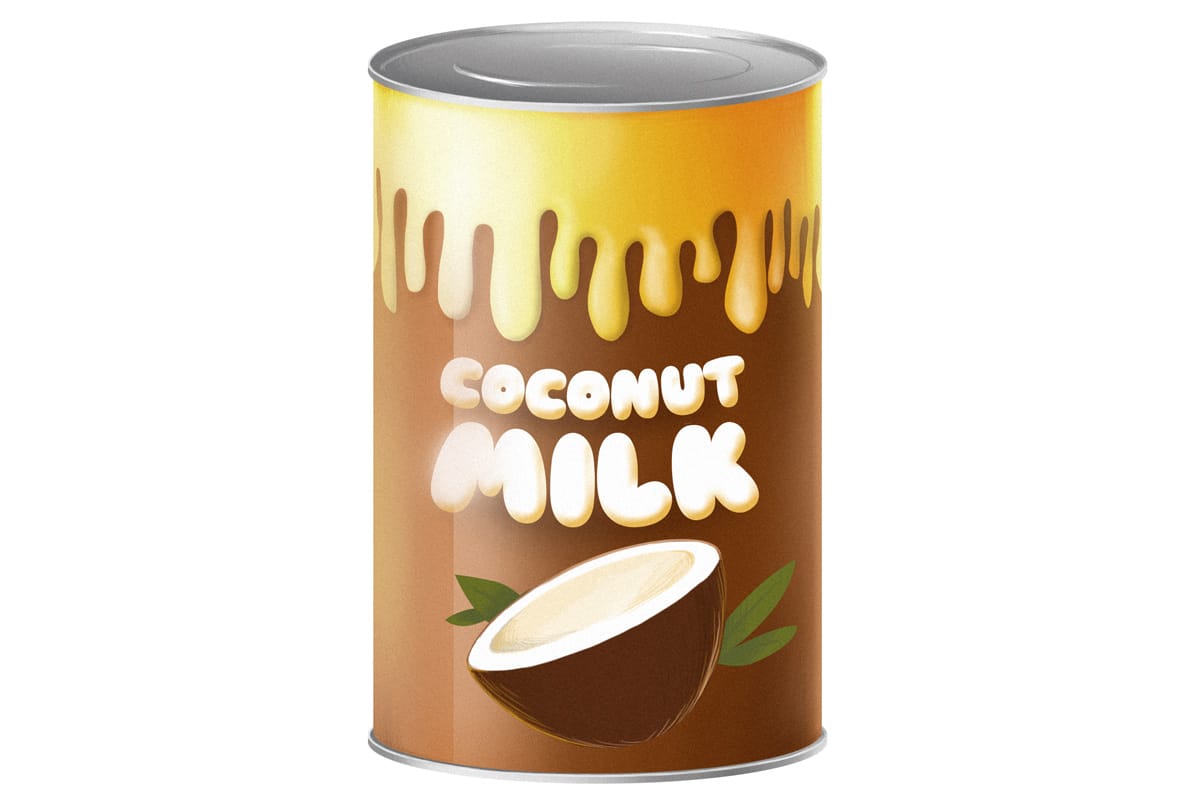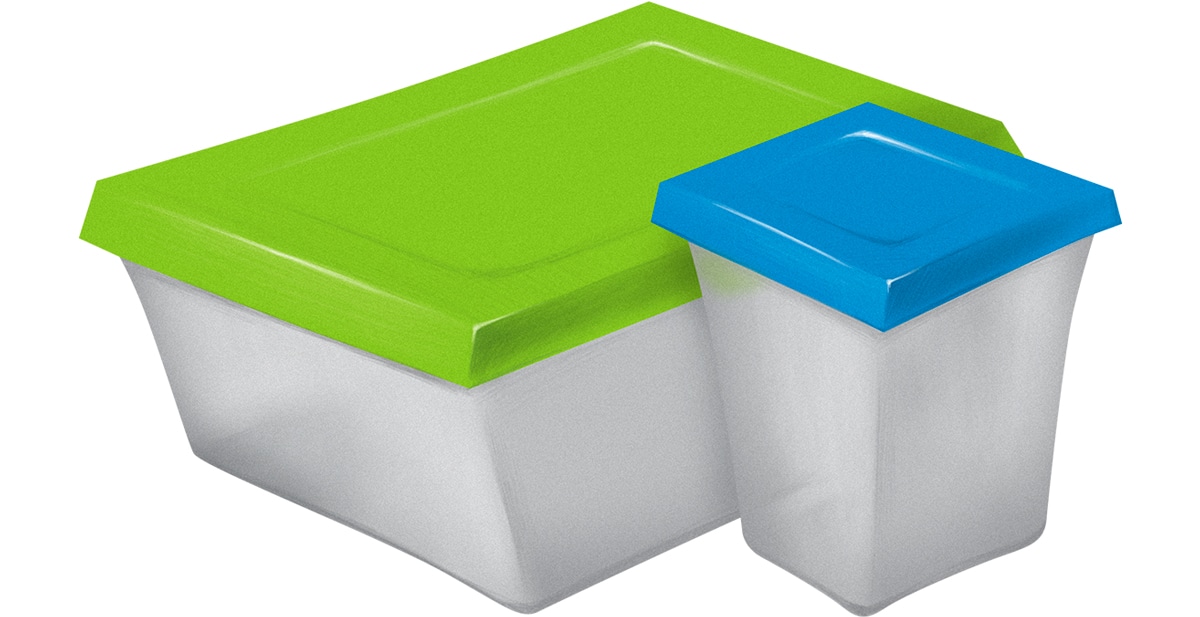Plastic containers are everywhere, and most of us use them without thinking twice about it. But could they actually be dangerous?
When it comes to worries about chemicals leaching from plastic containers, it’s important to be very skeptical about the potential dangers. It’s easy to get caught up in panic about “toxins” and plastic being “unnatural,” but unless there’s actually evidence of specific substances (not generic “toxins”) that cause demonstrable harm in the amounts a normal human might reasonably get from typical use of plastic containers, there’s no reason to worry.
In this post, you’ll get a look at the potential problems with plastic containers – especially if you’re heating or stressing them in any way – and a realistic approach to minimizing harm that real people can actually manage. If you’ve always rolled your eyes at the calls to eliminate plastic because seriously, who can do that? Do these people not have jobs? Then this is the article for you.
What’s Wrong with Plastic? BPA and Pthalates
The major human health concerns about plastic revolve around chemicals with estrogenic effects. These chemicals act like the sex hormone estrogen, which affects reproductive health, thyroid health, fat metabolism, proliferation of fat cells, and other important processes. Obviously, if something actually is causing abnormal changes in your estrogen levels, it's cause for serious concern.
Estrogenic chemicals would be fine if they stayed in the plastic containers – after all, it’s not like you’re eating your Tupperware. But if plastic containers are heated up (or even left in the sun), scratched, stressed, or exposed to acidic substances like vinegar in salad dressing, then some of these estrogenic chemicals can leach out of the plastic and into your food.

The big name here is BPA. BPA stands for Bisphenol A; it primarily comes in contact with your food through plastic containers and the linings of cans.
It’s hard to tell exactly what – if any – health effects BPA exposure has in the real world. Almost all Americans have some BPA in their urine. Urinary BPA is almost universally below the recommended upper limit for daily exposure, but since the recommended upper limits were established, new studies have shown possible dangers at much lower concentrations, especially when exposure continues over a long time.
Some evidence has confirmed an association between higher urinary BPA and problems like obesity, diabetes, and other cardiometabolic problems. But associations can’t and don’t prove causation. For example, people with obesity may have higher urinary BPA because they eat more junk food out of BPA-containing containers, but was it the BPA that caused the obesity, or was it the junk food?
This review also points out that the way we measure BPA exposure may have some serious problems: it’s not at all clear whether BPA actually causes any of the issues it’s associated with.
There’s more substantial evidence for potential harm in infants and young children, who aren’t as good at metabolizing BPA, but overall there’s no conclusive evidence either that BPA causes harm or that it’s safe.
Next up: phthalates. Pthalates are another type of potentially estrogenic chemical found in plastics. They're also found in everything else, like cosmetic products and building materials, not to mention plastic products that have nothing to do with food, like medical equipment. This makes it harder to tell whether plastic food containers really have that much of an impact on total phthalate exposure, since there are so many other sources.
The link between phthalates and any potential dangers is even more tenuous than the connection for BPA, but there’s some preliminary evidence that they may cause reproductive problems. Many people in the US have high exposure to pthalates, especially children and toddlers, which is bad news because phthalates, like BPA, may also be more dangerous in children. The big source of exposure to phthalates seems to be not from plastic bottles and containers that you buy, but from processing equipment like conveyor belts and wrappers that your food comes in.
This is actually good news for Paleo eaters, because far and away the largest dietary source of phthalates is dairy foods (phthalate exposure comes from the milking equipment), which Paleo eaters minimize or eliminate. So looking just at food-related plastic use, Paleo is already a low-phthalate diet.
The bottom line: BPA is probably more of a problem for the Paleo crowd, because Paleo minimizes food-related phthalate exposure anyway. There's some evidence that it's reason for concern, especially in children, but it's far from a closed case.
Convenience vs. Perfection
So in all, there may be some reason for concern about plastics coming in contact with your food, but the problem with trying to reduce plastic use is that it can add an extra layer of work to the already time-consuming job of cooking all your food at home, grocery-shopping for raw ingredients, planning meals, and cleaning up after meal prep. For some people, this can make Paleo completely impossible – plastic containers are their answer for lightweight, water-tight, portable containers for easy packed lunches and breakfasts, and without that packaging, packed Paleo meals just aren’t going to happen.
Even if there are some health risks to eating out of plastic containers (as there may or may not be), Paleo + plastic is better than junk + plastic. You’d get plastic exposure eating junk food anyway; it’s not like you’re adding any plastic by filling your plastic containers with real food instead of junk. Even if the plastic is leaching artificial estrogens into your food in levels that could have negative health effects, getting healthy food with a side of BPA instead of junk with a side of BPA is a net benefit.
If you do have the desire and the energy (and the resources) to start reducing plastic in your life, it’s probably a good idea – for environmental reasons, if nothing else. Here’s how to start, in order from biggest to smallest impact:
- Replace containers that you heat things in (or containers that you put in the dishwasher) – swap out plastic for glass, metal, Pyrex, ceramic, or other materials. Most of the concern about chemical leaching revolves around plastics that are heated, especially heated multiple times.
- Replace containers that you’re going to use more than once: water bottles, food storage containers, etc.
- Replace other containers and packaging as much as you reasonably can.
- Choose foods that don't come packaged in plastic as much as you reasonably can (on Paleo, this shouldn't be very difficult, since most of your food is fresh and unprocessed anyway)
Is BPA/Pthalate-Free Plastic Better?
The problem with replacing BPA, phthalates, or other substances in plastic containers is that they have to be replaced with something else. And that “something else” may have the same or potentially even worse effects. For example, here’s the case against BPA-free plastics, and here’s a report of a phthalate replacement called DINCH having unexpected and potentially serious health effects that simply weren’t studied before it went to market.
Since it’s just not clear whether the replacements for BPA or phthalates are actually better than the chemicals they’re replacing, it doesn’t seem reasonable to go through the hassle and expense of replacing your plastic containers with something that might turn out to be just as bad.
Summing it Up
When you look at systematic reviews and meta-analyses that examine a lot of studies in context instead of cherry-picking studies to fit a preconceived idea, it’s not clear whether eating things out of plastic containers has any demonstrable health effects.
Even if it does, the practical truth is that it’s better to get Paleo food + whatever potential bad stuff is in plastic than it is to get junk food + that same bad stuff. If plastic makes it possible for you to eat Paleo, then by all means, use plastic.
If you can, it may be better for you – and it’s almost certainly better for the planet – to swap plastic containers for reusable ones. But don’t let plastic perfectionism turn you off from cooking your own food at home; if plastic containers are what it takes to make Paleo work for you, then by all means, keep using them.






Leave a Reply